Springs
December 2019What are Cortec Springs?
We’ve been asked by a number of you to help explain what exactly Cortec Pocket Springs are and whether or not they are worth the extra spend? Do they really innovate in the world of springs? Is this new spring really a game-changer? We use our expertise in Spring technology to help look deeper.
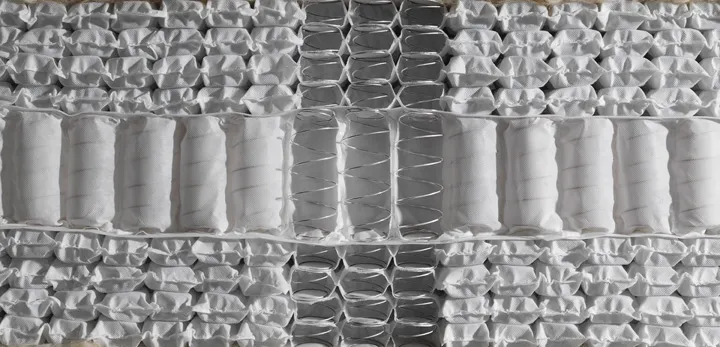
Cortec springs are the innovation of Harrison Spinks or Spinks Springs. They were first unveiled in 2019 for a range of four No Turn mattresses (you can read more on No Turns issues here). Cortec springs feature some interesting selling points so we thought we would detail them here to help you make a more informed mattress buying choice.
What is a Cortec Spring?
A Cortec spring is, in essence, a spun-bond synthetic pocket spring like you find in many entry and midpoint mattresses. Spun bond pocket springs are covered in a synthetic polymer-based covering that is then ‘heat’ sealed around the pocket spring. It is usually glued together to then form rows and rows of pocket springs used in mattress manufacture. However, the Cortec is different as it boasts a glue-free construction method which is fully recyclable.
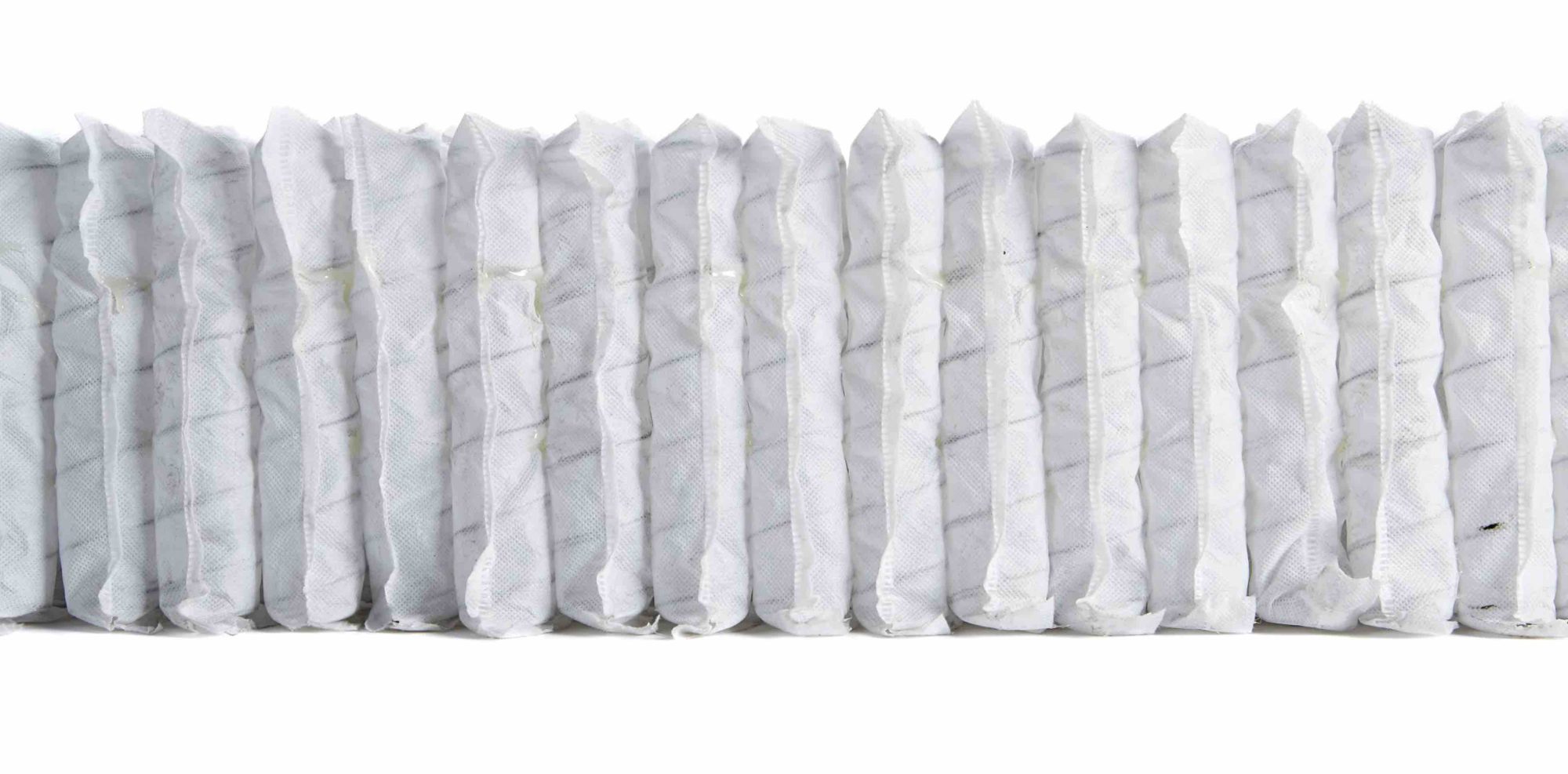
How are Cortec Springs Different?
Cortec springs by Harrisons are not glued together but heat-sealed into rows based on the sample we inspected. So you don’t need glue to bond them together as they can concertina together by being folded in their rows. Imagine a roll of sticky labels and how each one can be folded back on each other or torn off. This is pretty much the same layout as the Cortec spring.
Harrisons state three benefits from the new spring system.
- Glue free (as they are heat-sealed which melts the spun-bond material before it hardens on cooling forming a seal
- Recyclable due to lack of glue
- Elongated providing a deeper and thinner spring for increased comfort
Glue Free Pocket Springs
This certainly is news to our ears! Glue in a mattress seriously hinders the movement and flexibility of springs and fibres. Which is why we have always been so against the foam beds in a box which are slabs of foam glued together. So we commend Harrisons for this. It’s worth noting though that Calico Pocket springs that are available in higher-end mattresses such as our Artisan range are all hand-stitched rather than glued like cheaper beds, so it’s not a complete innovation. It’s been a technique used in higher-end mattresses for some time. It’s great that Harrison Spinks is now championing this as well with these springs.
Recycling a mattress
It’s also great to see more potential recycling in the mattress industry. It’s no secret that local councils have been slow off the mark to allow people to recycle their mattresses. As there are mixed materials in mattresses including metal many councils still won’t allow recycling. It’s really frustrating in the bed industry that our products can theoretically be recycled, again like our mattresses, but councils simply wont take them.

There’s only a handful of specialist bed recycling companies out there so often that not its simply too difficult to get any mattress recycled. Some retailers offer to recycle but you need to check their credentials. We have heard stories of this ‘recycling’ simply being taken to a mixed waste disposal facility and incinerated. Please bear this in mind. We’re hoping that one-day bed recycling will become widespread and components reused.
Cortec Springs Increased Comfort Properties?
The Cortec spring claims to have increased comfort properties as the springs are thinner and taller than regular Pocket Springs. The theory is that they can offer more compression and movement when pressure is applied to them. They also claim more contact points for the sleeper.
Whilst this may be true it also needs to be taken into consideration along with the upholstery that its matched with and the overall construction detail of the mattress. The spring unit whilst important is only one component in the mattress.
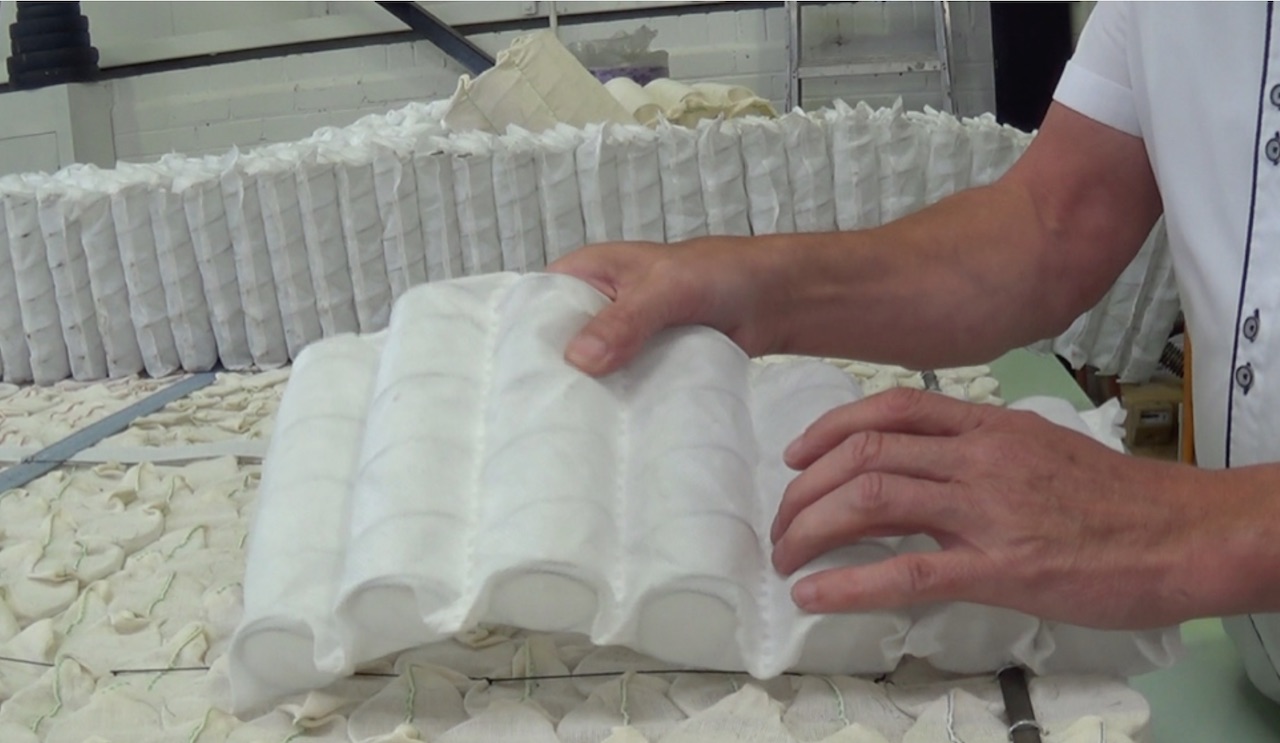
Springs have two simple functions – to provide support when compressed by pushing back against the load and extension when the load is taken off back to their original starting position. There is very little development outside of that remit. By making springs longer or shorter, fatter or thinner you can tweak this function. To make them stiffer and slower or lighter and more flexible. It really depends on the load placed on them and the upholstery they are matched up with.
There is also debate within the spring community about the best size spring. There is a thought that the industry standard-sized Calico Pocket Spring that the likes of Vispring, Savoir and ourselves use is already at the golden ratio. Ie the perfect size to provide support, compression and deflection. When you reduce the size you may increase the number of springs but not necessarily keep the same structure or longevity of the spring.
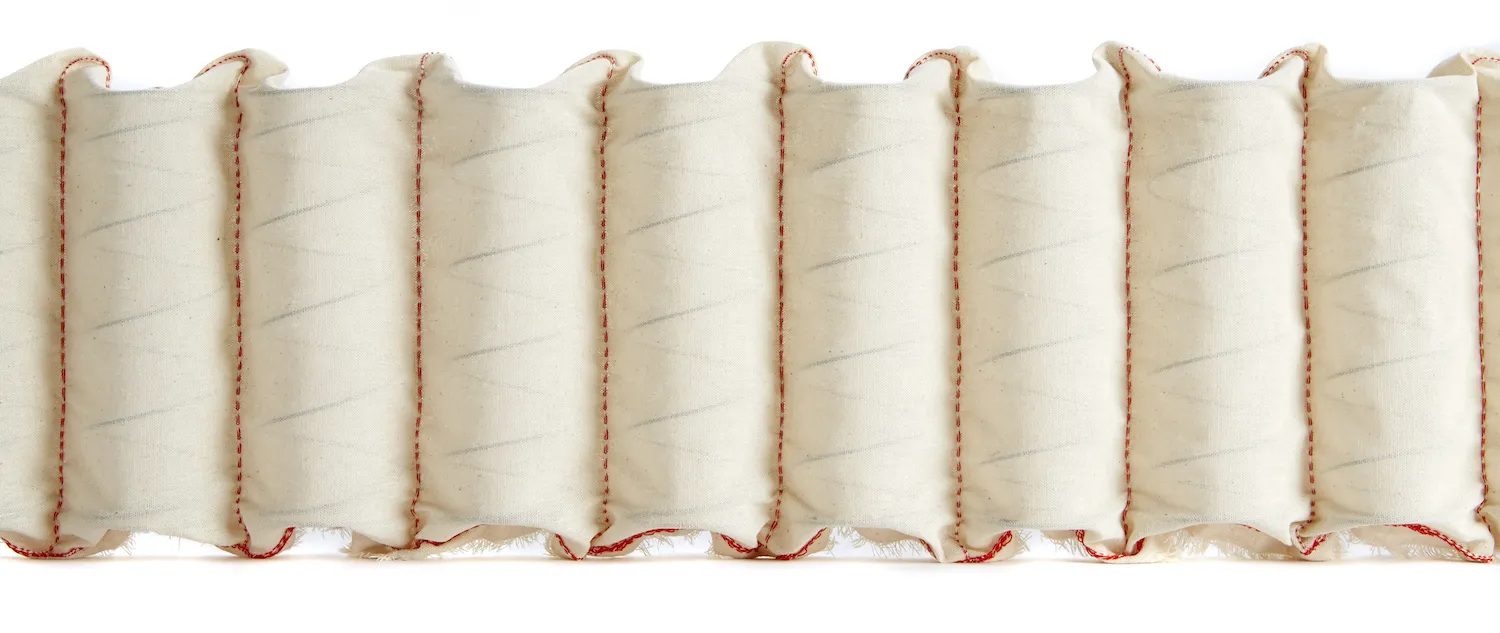
Spunbond Pocket Springs are cheaper to produce using synthetic encasing
Calico Pocket Spring offers the ultimate in flexibility & breathability
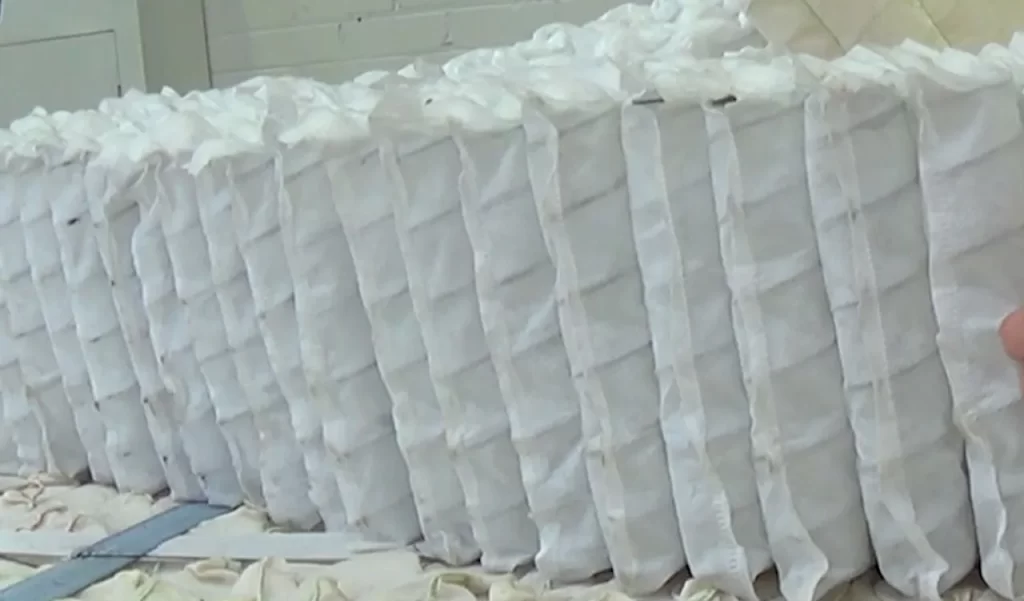

Are more springs better than fewer?
We’ve had this debate for years on this site about spring counts. The sad fact is that retailers are racing to get more springs into their mattresses. Not because this is necessarily needed but because you the consumer on first glance may equate the higher spring count to a better quality mattress. To give this some context you really need to know the minimum and the maximum number of springs a mattress can contain in one layer. Add this to the maximum depth of a mattress (around 30-35cm) there’s only so much space in a mattress where fibres and springs can be housed. If you increase one too much then the other needs to decrease.
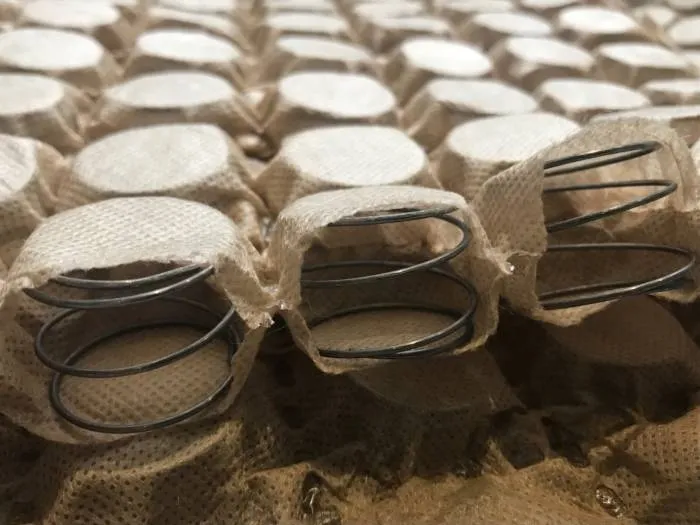
The minimum amount of Pocket Springs you can fit into a Kingsize mattress is 600. Most mid-level mattresses use 1000 springs, then higher-end use 1500. The maximum number of single-layer pocket springs you can fit in a mattress is 2000. Any more than that and it is either dual layers or smaller springs.
When you see counts in the thousands, retailers will be using Micro or HD springs which we would never use. As they simply don’t perform correctly and we believe are a waste of money.
Summary
The Cortec springs we sampled reacted very similarly to standard Spun Bond springs. Yes, they are slightly longer and thinner so there are more of them. They also don’t contain glue which is a nice benefit. It’s also nice to see Harrisons innovating trying to help increase recycling.
However, they still are housed in spunbond synthetic cases which compared to a Calico Cotton encased Pocket Spring will always be slightly slower to react. Calico is also far more breathable making the bed cooler and easier to ventilate. We would also advise you think carefully about choosing a mattress which is one-sided, meaning you can’t turn it as based on or experience and hundreds of customer comments, these one-sided mattresses tend to experience sagging or compression far faster.

Dreaming of the perfect nights sleep?

Ask us a question
There are over 6000 questions and answers submitted by you on all questions about mattresses and bed problems. Enter a keyword such as Vi Spring, John Lewis beds, bad back or Memory Foam and see if your question has already been answered.
If you can’t find an answer in knowledge hub, ask a new question. We aim to respond to all questions within one working day.
Newsletter
Enter your email to join our newsletter. We’ll send you occasional news and mattress expertise.
